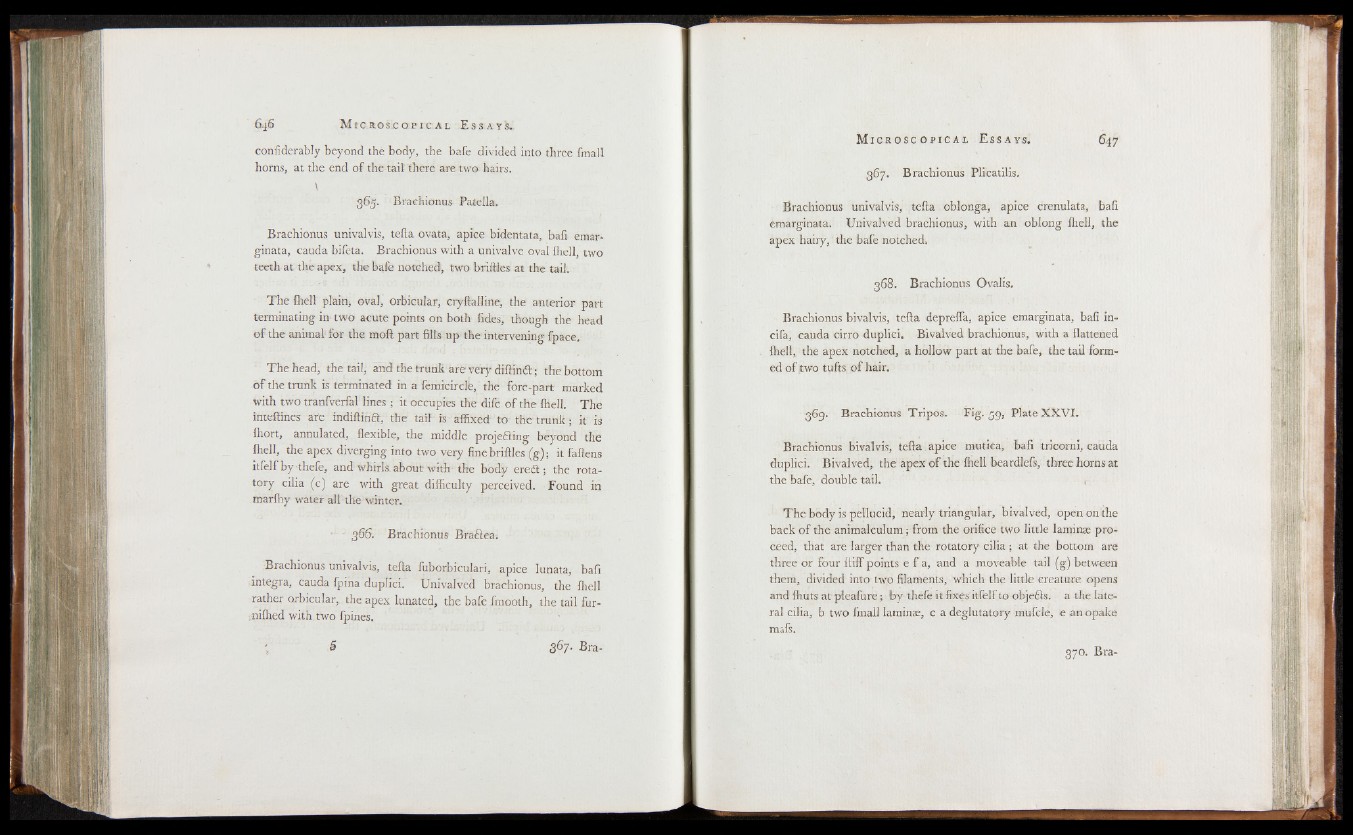
646 M i c r o s x o p i c a l E ss ays ..
confiderably beyond the body, the bafe divided into three (mail
horns, at the end o f the tail there are two hairs.
\
365. Brachionus Patella.
Brachionus univalvis, tell a ovata, apiee bidentata, bafi emar-
ginata, cauda bifeta. Brachionus with a univalve oval fhell, two
teeth at the apex, the bafe notched, two brillles at the tail.
The fhell plain; oval, orbicular, cryftalline, the anterior part
terminating in' two acute points on both fides,’ though the head
o f the animal for the mod part fills up the intervening fpace.
The head, the tail, and the trunk are very diftindt; the bottom
o f the trunk is terminated in a femicirelfe, the fore-part marked
with two tranfverfal lines ; it occupies the difc o f the fhell. The
inteftines ate indiftinft, the tail is affixed to the trunk; it is
fhort, annulated, flexible, the middle projeaing beyond the
fhell, the apex diverging into two very fine briflles (g); it fallens
itfelf by thefe, and whirls about with the body e r e c t th e rotatory
cilia (c) are with great difficulty perceived. Found in
marfhy water all the winter.
366. Brachionus Braftea.
Brachionus univalvis, tefta fuborbiculari, apice lunata, baft
integra, cauda fpina duplici. Univalved brachionus, the fhell
rather orbicular, the apex lunated, the bafe fmooth, the tail fur-
nifhcd with two fpines.
367. Brachionus Plicatilis.
Brachionus univalvis, tefla oblonga, apice crenulata, bafi
emarginata. Univalved brachionus, with an oblong fhell, the
apex hairy, the bafe notched,
368. Brachionus Ovalis.
Brachionus bivalvis, tefla depreffa, apice emarginata, bafi in-
cifa, cauda cirro duplici, Bivalved brachionus, with a flattened
fhell, the apex notched, a hollow part at the bafe, the tail formed
of two tufts of hair.
369. Brachionus Tripos. Fig. 59, Plate XXVI.
Brachionus bivalvis, tefta apice mutica, bafi tricorni, cauda
duplici. Bivalved, the apex o f the fhell beardlefs, three horns at
the bafe, double tail. <
The body is pellucid, nearly triangular, bivalved, open on the
back of the animalculum ; from the orifice two little laminas proceed,
that are larger than the rotatory cilia ; at the bottom are
three or four ftiff points e f a, and a moveable tail (g) between
them, divided into two filaments, which the little creature opens
and fhuts at pleafure; by-thefe it fixes itfelf to objefts. a the lateral
cilia, b two fmall laminae, c a deglutatory mufcle, e an opake
mafs.